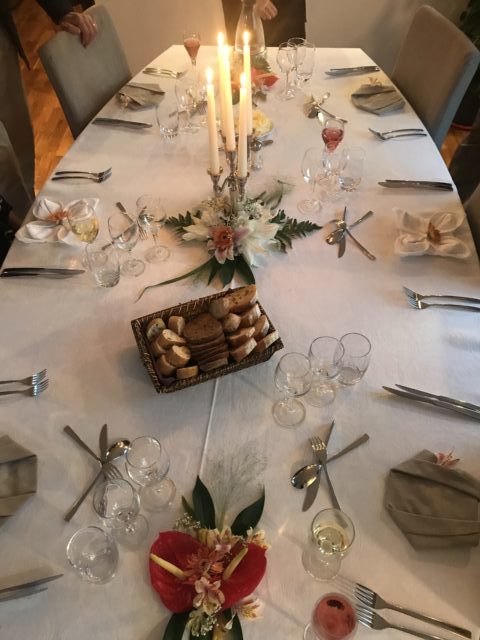Recently I spent 3 weeks in France, where we spent 7 nights on an Abercrombie & Kent canal barge cruise. Our travels started in Paris and continued to Champagne. We then boarded a cruise to Beaune with dear ones celebrating a friend’s milestone birthday. One morning, toward the end of the trip, one of my 8 traveling companions was rushed to the emergency room in the Burgundy region – which is the rural French countryside. Unfortunately, she didn’t speak French and I was regretting I’m no longer fluent in French. Nonetheless, I was thrust into the position of communicating with the local medical professionals who didn’t speak English as I was the traveling companion with limited French proficiency.
The hospital wifi was limited to staff only, so using Google Translate was impossible unless we wanted to use costly cellular data. So I whipped out our miniature travel sized French-English dictionary, a gift to my husband from another one of our traveling companions. What a hit – the French medical professionals immediately used it to research words and communicate directly with us since our patient was confused and suffering from short term memory loss. At the end of our 10 hour stay in the ER, we gifted the travel dictionary to the most appreciative French medical team.
Tech tools have their limitations, particularly in rural areas, even in industrialized, first world countries, where internet or data coverage is spotty or extremely expensive. Also, while translation apps continue to improve there are still many nuances to language. Consider that, for example, India alone has 22 official languages. Arabic has more than half a dozen dialects, and Spanish has numerous regional variations. English vocabulary even shifts, whether you’re in the UK or the U.S., South Africa, Australia or other global settings. The subtleties of language in the context of real-life travel situations is not always one that tech tools can capture as the above example illustrates.
Here are three non-tech language tools I recommend carrying on your business and leisure travels:
- A classic language dictionary. A pocket-book sized dictionary can save the day when getting basic communication across. Print out a one-page phrase and vocabulary sheet.
- Translated phrases on notecards. Especially helpful to communicate medication, food, allergy, sensitivities and conditions. Prepare before you go.
Symbols. A printed symbols page or note card such taxi, hotel, plane, a glass of water, washroom, hospital, MD, pharmacy, etc. Make the list you need!
Sharon Schweitzer wrote this post. Sharon Schweitzer, J.D., is a cross-cultural trainer, attorney, modern manners expert, and the founder of Access to Culture. In addition to her accreditation in intercultural management from the HOFSTEDE Centre and the Intercultural Communication Institute, she serves as a Chinese Ceremonial Dining Etiquette Specialist in the documentary series Confucius was a Foodie, on Nat Geo People. She is the resident etiquette expert on two popular lifestyle shows: ABC Tampa Bay’s Morning Blend and CBS Austin’s We Are Austin. She is regularly quoted by BBC Capital, Investor’s Business Daily, and Fortune. Her Amazon #1 Best Selling book in International Business, Access to Asia: Your Multicultural Business Guide (Wiley 2015), now in its third printing, was named to Kirkus Reviews’ Best Books of 2015. She’s a winner of the British Airways International Trade Award at the 2016 Greater Austin Business Awards and the 2017 New York City Big Book Award for Multicultural Nonfiction.



Leave A Comment